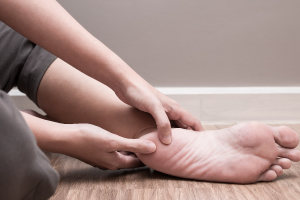

Swimmer’s ears or Otitis externa is a common illness that affects those who spend a lot of time in the water. It happens when water gets stuck in the ear canal, producing a damp environment that’s ideal for the growth of fungi or bacteria. This results in outer ear infection and inflammation.
Therefore, understanding swimmer’s ear causes, symptoms, and suitable treatments is essential for swimmers and others experiencing ear discomfort. This comprehensive guide will go over the ins and outs of this issue, including its causes, symptoms, and practical remedies like ear drops for swimmers’ ears.
Understanding the Causes of Swimmers’ Ears
Here are some of the main causes of this condition –
- Prolonged exposure to water
- Swimming in contaminated water
- Trauma to the ear canal
- Skin conditions like eczema and psoriasis
Early Symptoms of Swimmers’ Ears
There are several symptoms which can be early signs of swimmer’s ears. If someone is having these symptoms for a long time, then get medical attention as soon as possible. Symptoms such as:
- Itching: The early signs of swimmer’s ears is constant itching in the ear canal. This can be worse to tolerate sometimes.
- Pain: Discomfort or pain, especially when touching or pulling on the earlobe, is one of the leading swimmer’s ear symptoms. Pain can sometimes shift to the face, side of your head, and neck.
- Redness and Swelling: As the infection spreads, redness and swelling could appear, and they are some of the leading symptoms of this problem.
- Fever: Fever is another symptom of this health issue, which can also lead to excessive pain.
- Discharge: You can also notice a clear yet yellow or green with a foul smell discharging from your ear. This is another notable reason for this issue.
Treatment of Swimmers’ Ears
Effective swimmer’s ear treatment is necessary in order to reduce symptoms and prevent issues. Such as:
- Use Ear Drops: To treat swimmers’ ears, antibiotics and anti-inflammatory ear drops are often used. Apply these ear drops for swimming’ ears directly into the ear canal to combat the infection and reduce irritation. For the best results, it is imperative to take medication exactly as directed and to finish the entire course.
- Learn Ear Drying Techniques: After swimming or showering, tilt your head to a side and wait till the water comes out. This will help the ear canal to dry faster and prevent such issues.
- Stay away from swimming: In case you are suffering from this health issue, stay away from swimming for some time, specifically till the issue is cured.
- Use painkillers: In case the intensity of the pain increases, take painkillers to get initial relief. But make sure you get in touch with a doctor soon after that.
Prevention Strategies to Avoid Swimmers’ Ears and Related Ear Issues
To avoid such diseases, swimmers should adopt some important strategies in their regular lives; it would be a great way to reduce the chances of having any kind of ear infection.
Keep Ears Dry: After a swim or shower, make sure the ears are totally dry. Wipe the outer ear dry with a soft cloth after letting the water slowly run out of the ear by tilting your head.
Stop Aggressive Cleaning: Never use cotton swabs or other sharp objects within the ears to remove dirt or clean ear wax. The sensitive lining of the ear canal can be harmed and also increases the risk of infection. Always Use a soft cloth to gently clean the outer ear instead.
Avoid Irritants: Try to avoid products like shampoo, hairspray, and chlorinated water, which can irritate the skin, to clear your ear canal because they can worsen ear problems and increase the risk of infection.
Completely Dry Ears: Keep the hair dryer at least 30 cm away from your ears to avoid any burns or discomfort, and use the hairdryer on the lowest setting to dry the ears gently.
Swim Caps or Earplugs: To protect ears from infection and other ear diseases, swim caps or earplugs are also available in the market. These items can prevent the water from entering your ear.
Ear Check-ups: Those who swim frequently or regularly need to go for regular ear check-ups. The doctors can detect the issues early and prescribe the right treatment for the ears.
Conclusions
Swimmers who regularly swim should look for medical attention and, more importantly, take some precautions in their daily lives to help them prevent serious and permanent issues like infection or loss of hearing. As swimmer’s ears are a common ear issue, by gaining the right knowledge and precautions, the risk of ear diseases can be reduced for a lifetime.
Frequently Asked Questions About Swimmer Ear
Q2. What are the symptoms of swimmer’s ear?
The symptoms of swimmer’s ear may vary from person to person but commonly include itching in the ear canal, ear pain that worsens when touched or pulled, redness and swelling in the outer ear, discharge (clear or yellowish), and temporary hearing loss or muffled hearing. In advanced cases, the discharge may become pus-like and excessive.
Q3. Is the problem of swimmer’s ears serious?
While a swimmer’s ear is generally not considered a life-threatening condition, it can cause significant discomfort and should be taken seriously. If left untreated, the infection can spread and potentially lead to complications such as middle ear infections, cellulitis (skin infection), or even damage to the bones and cartilage of the ear. It is important to seek medical attention if you suspect you have a swimmer’s ear.
Q4 How do I get rid of my swimmer’s ear?
The treatment for swimmer’s ear typically involves the use of prescription or over-the-counter ear drops containing antibiotics or antifungal agents to eliminate the infection. Additionally, over-the-counter pain relievers may help manage the pain and reduce inflammation. If symptoms persist or worsen despite home treatment, it is advisable to consult a healthcare professional for appropriate treatment.




